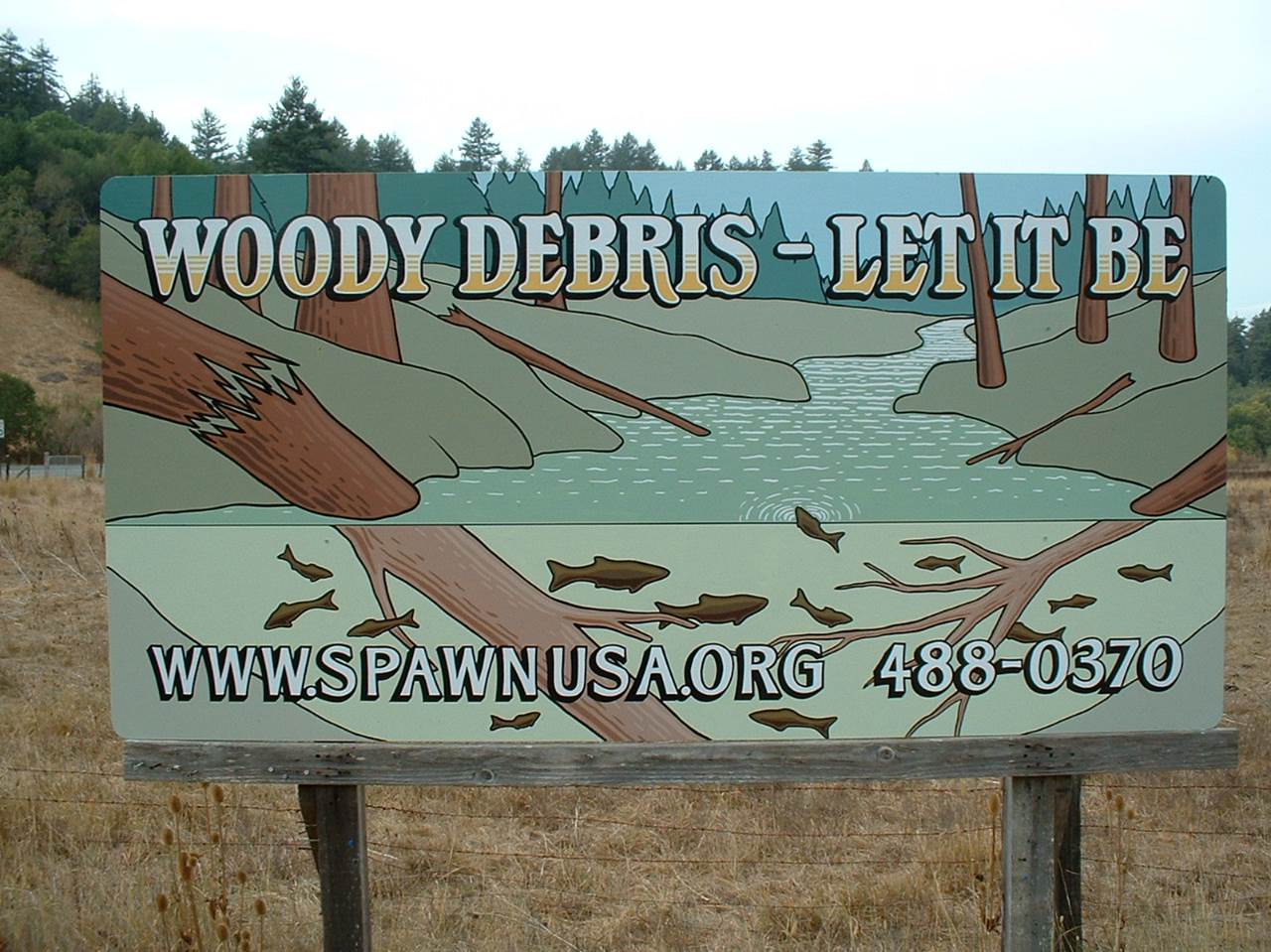Olema, Calif. – The Salmon Protection and Watershed Network (SPAWN) received a grant from the California Department of Fish and Wildlife’s Fisheries Restoration Grant Program to place numerous fallen trees, logs, and rootballs in San Geronimo creek to restore critical habitat for salmon and protect streambanks against erosion that is threatening homes. Approximately 500 feet of San Geronimo Creek, across four private properties, will be restored and protected with this project.
Saving endangered Coho salmon and protecting private property can be mutually beneficial. Juvenile Coho salmon need slow water, insect prey, and cover from predators; adult coho need clean gravels and healthy spawning riffles; and people living on the creek need assistance to deal with erosion and creek stability. This project accomplishes all three.
“It’s very excited to implement a project with so many benefits, both for the endangered Coho salmon and the Valley Landowners,” said Preston Brown, Watershed Conservation Director and Project Manager of the Salmon Protection and Watershed Network. “Large woody debris is often seen as a liability or a hazard, but wood plays a critical role in helping the stream remain stable, providing habitat, holding grade and preventing incision.”
Beginning with cattle grazing and timber logging in the 1800s, San Geronimo Creek and its tributaries began to degrade. Sedimentation from grazing and roads, combined with the loss of riparian habitat, made creeks more erosive, carrying heavy sediment loads that cut away at the banks and channel bed. By the mid-twentieth century, nearly all streambanks in the San Geronimo Valley were lined with homes and other roads. Through this hardening of the streambanks, combined with increased “flashy” flows from urban runoff, the creeks could not adjust to the changes in flow by naturally widening or creating floodplains. Instead, creeks began to degrade down into their channels leading to “bowling alley” conditions in which the channels deepened 10-15 feet in places, the banks become steep, and the complex slow-water habitats that support Coho salmon disappeared.
This process, known as channel incision, is widespread throughout the San Geronimo Valley where creeks cannot naturally adjust because of streamside development, causing them to be unstable often cutting down to bedrock and eroding banks and hillsides.
By adding large woody debris to help build the channel back up, this process of stream channel degradation can be slowed down or even reversed, re-creating the habitat that Coho salmon need for spawning and rearing, while improving the stability of the channel to protect streamside property.
This project also includes the restoration of 3,000 square feet of riparian habitat at the Lagunitas School, removing a dilapidated storage shed and sandbox from the banks of Larsen Creek, and planting hundreds of native plants and trees. SPAWN received the only grant in Marin County from the Fisheries Restoration Grant Program, demonstrating the ability of a local organization to successfully receive a competitive grant and bring resources to the community.
“This project is an example of how grassroots efforts can be taken to support recovery of endangered species on private lands, working to benefit the ecological health of the San Geronimo Valley and its landowners,” commented Brown. “This is an important model to demonstrate how willing landowners can participate in endangered species recovery.”




